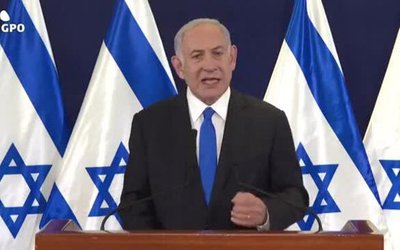
“If all sinners were to be shot at sight, few would be left to bury the dead”, says Clarence Darrow writing in the American context of early twentieth century. He was referring to ‘sinners’ who had transgressed the moral law. The remedy prescribed by reformers of his time was “more police, more revolvers, more clubs, and more jails”, which he seems to challenge in the quote above. If we take the sin of corruption, Devendra Raj Panday’s new opus – The Idea of Integrity and the Universe of Corruption and Anticorruption – shows that the sin is committed across the world transcending all political, social, and cultural boundaries. Even faith-based institutions are not free of what Panday sees as ‘integrity failure’.
Corruption as a moral challenge
The book offers a strong ideological contestation over the very definition of corruption. It sees corruption as a social and moral challenge, or a symptom of integrity failure. ‘Unbridled individualism’ is fostering it. Societal values and norms need serious attention in our efforts to build integrity. The book is, thus, a must-read for those who are engaged in promoting integrity in public life. Integrity is about ‘doing the right thing for the right reason’. It is not only about being honest to oneself but also about thinking through the consequences of one’s actions for others. For this reason, the book expands the standard definition of corruption as the ‘abuse of public office for private gains’ into something that encompasses moral values and ethical standards. Speaking of moral values, the book challenges relativism (that anticorruption norms can be different for countries at different stages of development) and revisionism (that corruption can be justified for economic, institutional, or any other reason). But it is slightly soft on ‘corruption committed due to need’ (p.326). While this is understandable, the challenge is how to define the ‘need’ of individuals in different social contexts.

Learning and unlearning
Refreshingly, the book identifies ‘new’ sources of knowledge about how to deal with corruption. Much of such knowledge today is sourced from political science and economics. The predominant view of corruption within these disciplines is reflected in the ‘principal-agent model’ within which ‘principals’ (people’s representatives in our case) would be able to address corruption through the design of incentives and institutions. The model has not worked well in our times due to integrity deficit among the principals themselves. The book tries, successfully, to expand the frontiers of knowledge by citing numerous examples from history, philosophy, arts, or literature. Even the study of religions could help provided hypocrisy is overcome. And there is also something to ‘unlearn’. Panday, himself a prominent economist, seems to be jaded with the (over)-emphasis placed on the conception of rationality in explaining corrupt behavior. He encourages us to recognize that not every ‘rational choice’ is driven by an exclusive pursuit of self-interest as “human beings may reject material incentives in favor of a morally comfortable position they prefer in their self-interest” (p. 89). The message here is both powerful and empowering. Corruption is also a factor for social inequality which, the book observes, has not been picked up even by Picketty in his recent works (p. 21).
The role of politics
The book sees political corruption as the ‘mother of all corruption’. Patronage networks under neo-patrimonialism provide fertile ground for what the book defines as ‘higher corruption’. This is something we in Nepal are very familiar with. The book provides readers with a tour de horizon of political corruption around the world, with striking similarities between developed and developing countries in how power is traded for money. The use of money in politics, particularly elections, has robbed democracy of its ideological contents, even if “the end of ideology is not yet in sight”. In his rather elaborate discussion on recent elections in Europe and the US, Panday refrains from engaging in the debate on the nature of ‘post-truth politics’, which has attracted significant scholarly interest during the past two years or so.
Where do we go from here?
With two dedicated chapters on Nepal, the book offers very useful thoughts for strengthening anticorruption in this country. Fortunately, the recommendations are not about the old cliché - that bureaucracy should be reformed or some legislative provisions should be tweaked. The core idea of the book is to achieve ‘partnership for integrity’ involving political parties, civil society (not necessarily NGOs), and donors. Political parties should be open to creating space for the younger generation. Civil society champions should stop seeing anticorruption as a “project”; it should be a movement backed by ideology, or “anticorruption-ism” as Panday would like to call it. As for donors, they should learn from their past efforts which were not successful due to inherent contradictions. For example, they have weakened state capacity in the name of building it! One area that could benefit from donor support is independent research.
The book’s tendency to see donors at the same level as political parties or civil society for the purpose of partnership could be questioned, though. Not that they are unimportant or less influential. In fact, they tend to respond to national arrangements for anticorruption and may be expected to adjust to the emerging socio-political agenda for reform. Sharper focus should still be on national institutions, political or otherwise. In terms of working with political parties, we have seen that the ‘charms of continuity’ have prevailed over the need for change. How to incentivize senior politicians to be pro-youth will therefore be a hard nut to crack. We could perhaps think about disincentives. In his much-cited book The End of Power, Moises Naim (frequently quoted by Panday but not from this book) concludes that “in the 21st century, power is easier to get, harder to use – and easier to lose.” If so, why to cling on to power for too long!
Let’s hope that Panday’s book ignites fresh debates on how to engage in anticorruption and integrity-building in Nepal and elsewhere.
















